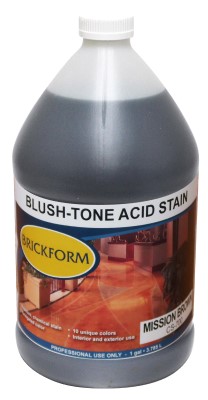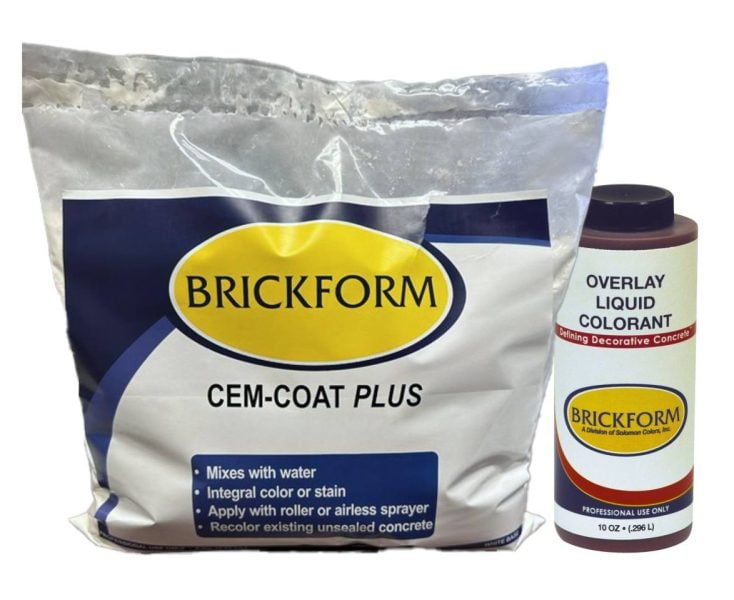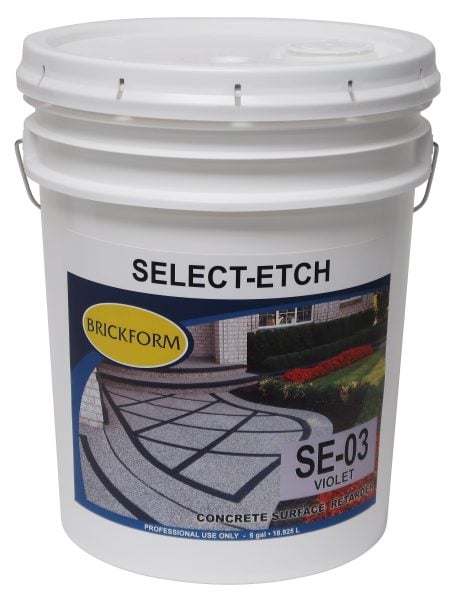What Are the Best Pool Decking Options?
Determine which pool deck material is right for your home, plus discover the benefits of concrete
Whether you’re putting in a brand-new pool or you’re replacing or resurfacing your existing concrete, it’s important to consider all the pool decking options when deciding which material to use.
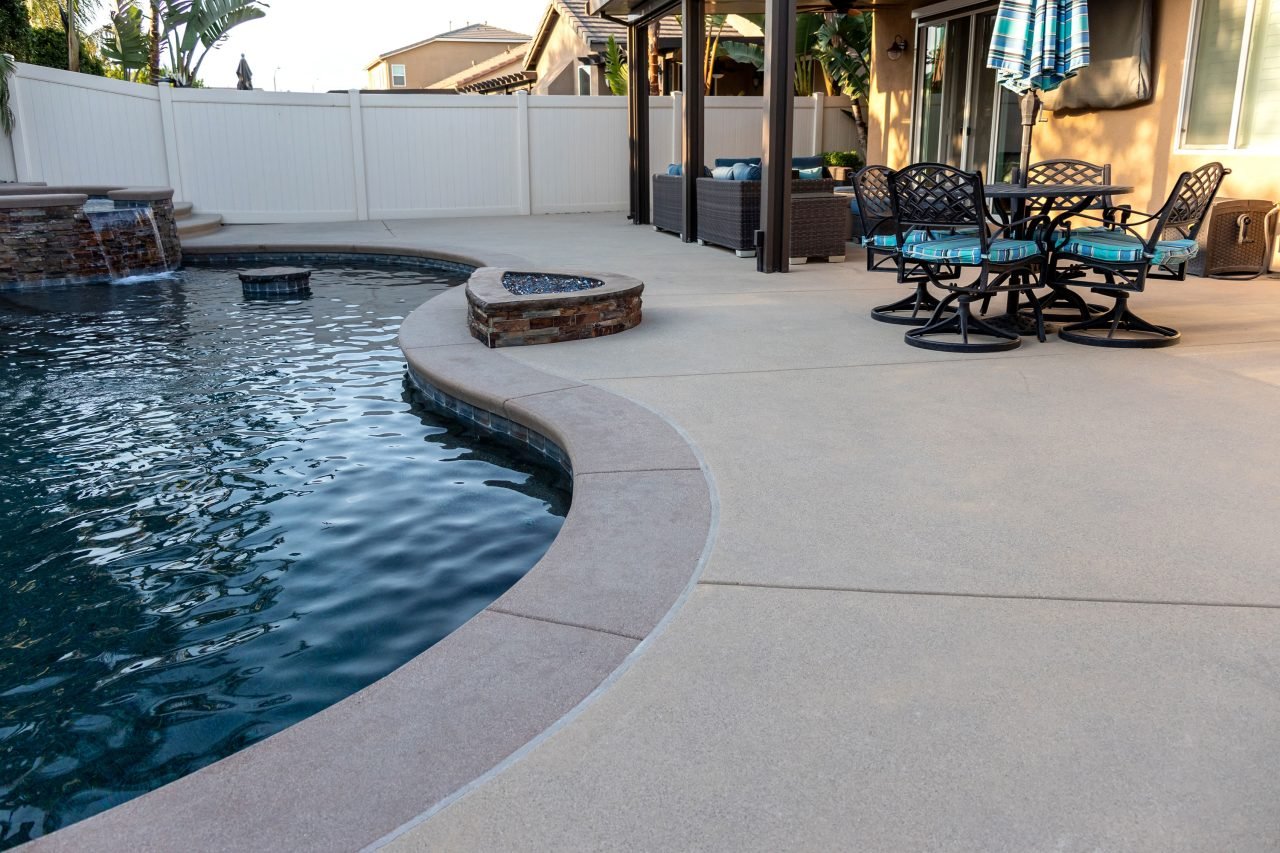
Pool deck material options
Here are some of the more popular options for pool deck materials:
- Concrete pool deck. Extreme durability is just one of the many qualities that makes concrete such a great option for pool decks. It can also be textured to stay cool and prevent slipping. When sealed properly, it is easy to maintain. People also love the versatility of concrete—it can be customized to fit just about any style (check out these decorative concrete photos for inspiration).
- Natural stone. While natural stone is a beautiful option, it does tend to heat up on hot summer days. Laying each stone is also a labor-intensive process that can be costly.
- Pavers. Like placing natural stone, placing pavers is a labor-intensive process. Pavers also tend to heat up easily.
- Unglazed tile. Tile that is used on pool decks, such as travertine, stays rather cool to the touch and doesn’t get as slippery when wet as glazed tile does.
- Wood decking. To properly avoid water and insect damage, you need to use a quality wood intended for exterior use such as cedar, ipe, redwood, or teak.
Tips, tricks and product updates: Get the Brickform newsletter!
What decking is best around a pool?
When considering a variety of factors such as safety, maintenance, temperature of surface, versatility of appearance, and cost, concrete is often considered the best pool deck material, offering clear benefits over other options.
- Safety. Slip-resistance should be of high importance to anyone putting in a pool deck. Although there’s no such thing as non-slip pool deck surfaces, you can take steps to reduce slipperiness. With concrete, you can have your surface textured to prevent slip-and-fall accidents. Another option is to include slip-resistant additives in your sealer. If you do that, it’s critical to reapply sealer so the slip-resistance does not wear out.
- Maintenance. Properly caring for a concrete pool deck requires brushing and spraying off the surface every so often to prevent staining. It’s also important to have the surface sealed every few years to protect it from chlorine, sunscreen, and other contaminants.
- Temperature of surface. When textured and colored properly, concrete is comfortable for bare feet on hot days, especially when compared to pavers which can get extremely hot to the touch.
- Versatility of appearance. With concrete, you can customize the appearance of your pool deck to fit your style. A variety of looks can be achieved using stamped concrete, exposed aggregate, and stained concrete.
- Cost. When compared to other pool decking material options, the long-term cost of a concrete pool deck is one of the least expensive options. Natural stone, for example, is costly on its own, and there is an additional cost for labor if you are having someone lay the stones. Plus, if you cut corners and opt for cheaper materials, you’ll end up having to replace them after a few years. A concrete pool deck that’s installed and cared for properly will last for decades.
Concrete pool deck ideas for in-ground pools
The versatility of concrete makes it a great material for pool decks. Here are just a few decorative concrete pool deck ideas.
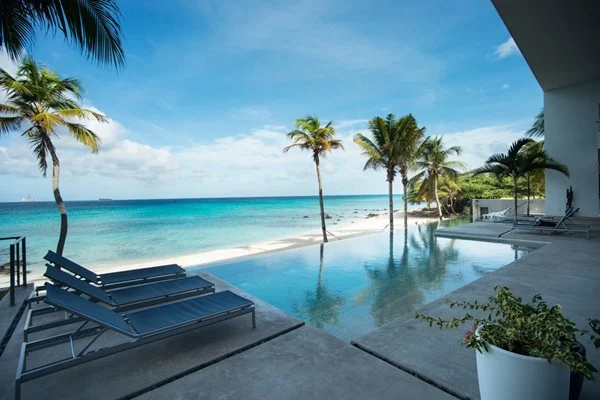
Opt for simple yet sophisticated
This pool deck is simple in that there is no intricate pattern, but the clean lines give it a sleek appearance. Light gray concrete keeps the surface cool on hot summer days.
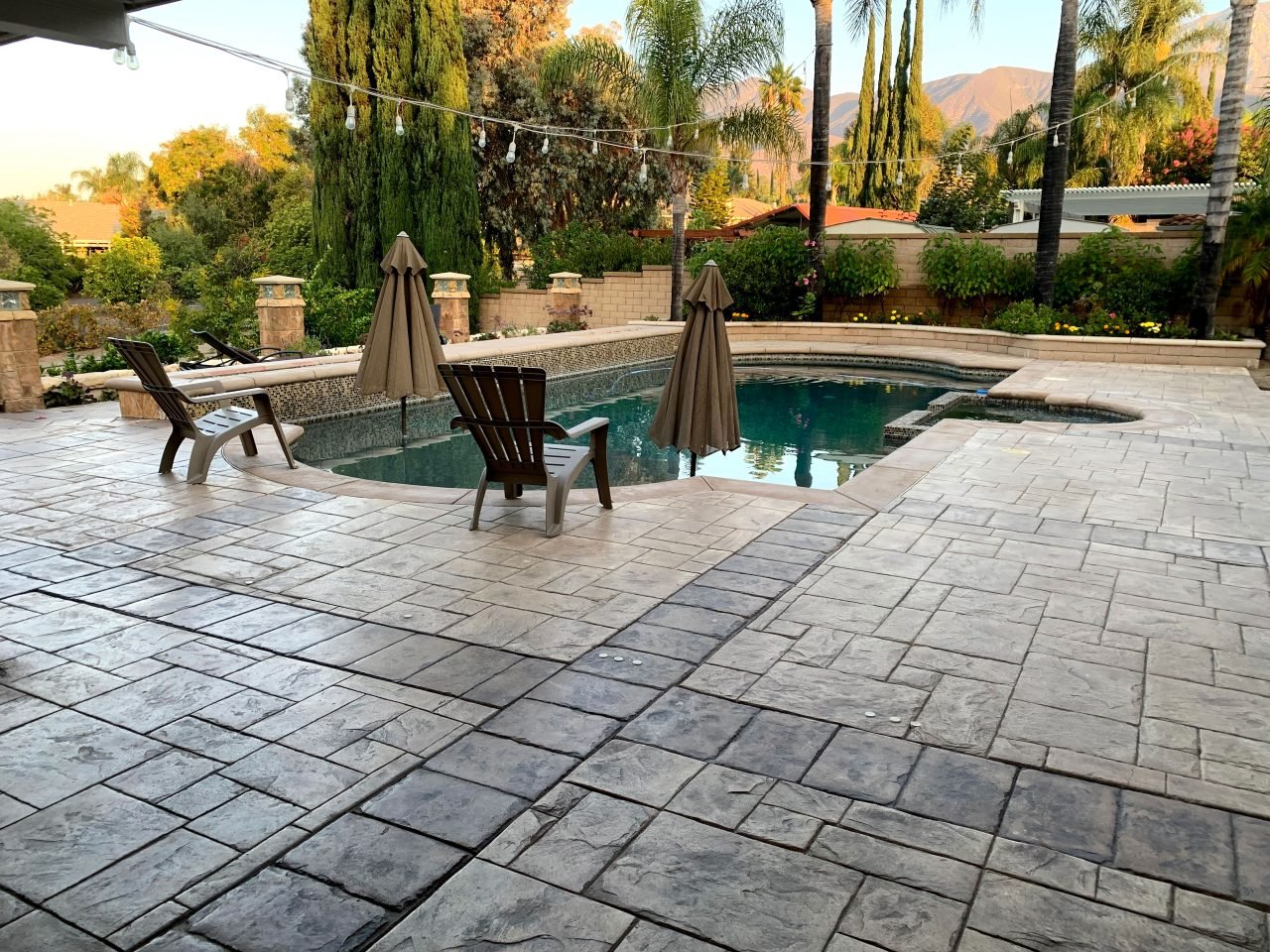
Create the look of any material
With stamped concrete, you can get the look of just about any material such as brick, cobblestone, and more. This pool deck is stamped to look like pavers in a variety of shapes and sizes, but it has the durability of concrete.

Get the right colors
By staining your pool deck surface, you can get a style that coordinates with your landscape’s aesthetic. There are a variety of colors available. See color charts for Brickform’s concrete acid stains and water-based stains.

Add interesting textures
Not only does the right texture create a slip-resistant surface, it also looks great. Here, a seamless concrete stamp adds texture and interest to this all-gray pool deck.
Are pavers or concrete better for pool decking?
This is a common question, and typically when weighing all the factors, concrete is considered a superior pool decking material to pavers.
Maintenance for a concrete pool deck is fairly straightforward, typically involving sweeping and hosing off the surface as necessary. Maintaining a paved pool deck, however, can be more involved. With pavers, pieces shifting and popping out of place is a concern. It’s also likely that after a few years you will need to repair joints to prevent weeds from growing in between pavers.
One maintenance concern for a concrete pool deck is the possibility of cracking. When concrete is poured there are things that can be done to prevent and control cracking. Adding fiber reinforcement to the mix is a great option. Brickform Ultra-M1x offers a premium color system combined with the added benefit of UltraFiber 500 in the mix. It is also important that joints are cut into the concrete at the proper locations so that the concrete cracks along these lines.
See More
